
Asia Pacific
19:23, 22-May-2019
A visit to the Holy See of Vietnam’s homegrown religion
Updated
10:42, 23-May-2019
Rian Maelzer
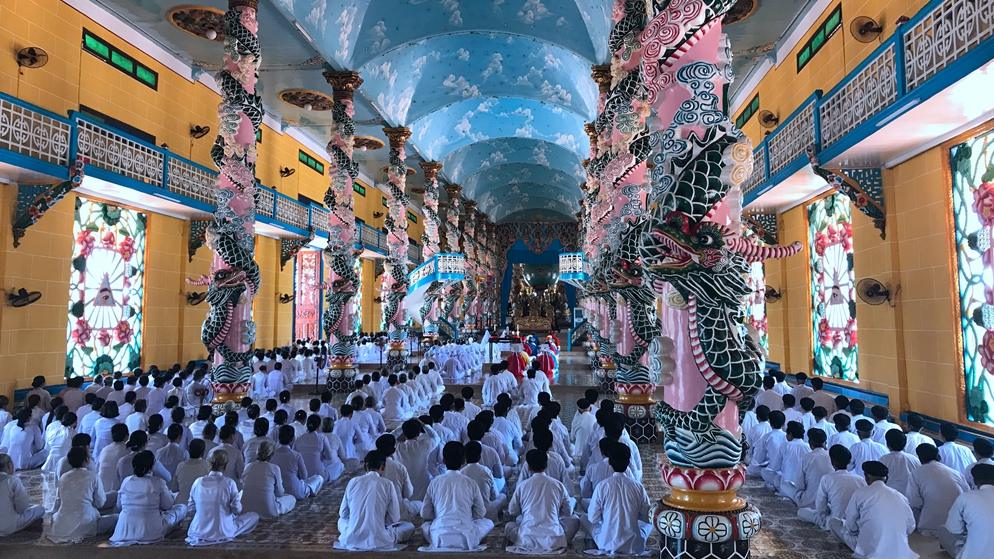
On the three-hour drive from Ho Chi Minh City to Tay Ninh, we passed a couple of unusual looking temples with twin towers at the front and a single eye at their center. These were the first clues that we were approaching the heartland of Caodaism.
A syncretic, monotheistic religion, Cao Dai merges elements of Buddhism, Taoism and Confucianism. But its followers also venerate figures from other religions, such as Jesus, and from Asian and European history, including Dr. Sun Yat-sen, and most prominently, the French poet and novelist Victor Hugo.
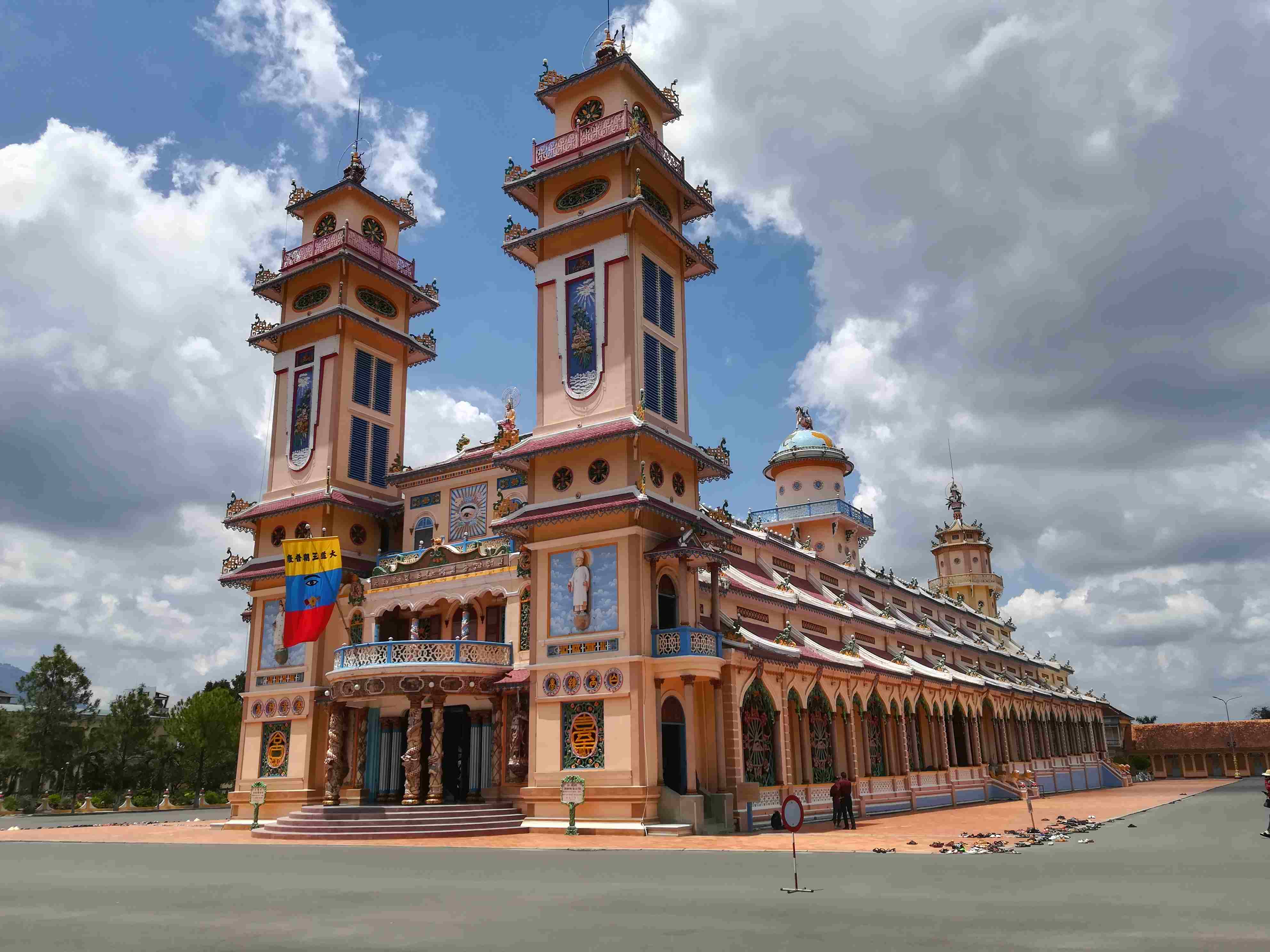
At the heart of the Holy See is the Great Temple. /CGTN Photo
At the heart of the Holy See is the Great Temple. /CGTN Photo
The heart of the faith is the Great Temple, located in a sprawling one-square kilometer plot of land, with broad boulevards dotted with French colonial-style houses, two patches of woodland and a flower garden. Borrowing the term from Catholicism, this is Caodaism's “Holy See” and I was about to meet the current living leader of the religion, His Eminence Cardinal Thuong Tam Thanh.
“Caodaism was established by God the father in 1926 and Tay Ninh was chosen as the holy land for our religion. We worship the eye of God. In Caodaism, we consider compassion as the basis of the religious practice. We also consider benevolence and righteousness as the motto of the religion, serving human beings as the action,” the cardinal explained to me through an affable interpreter called Tuan Em.
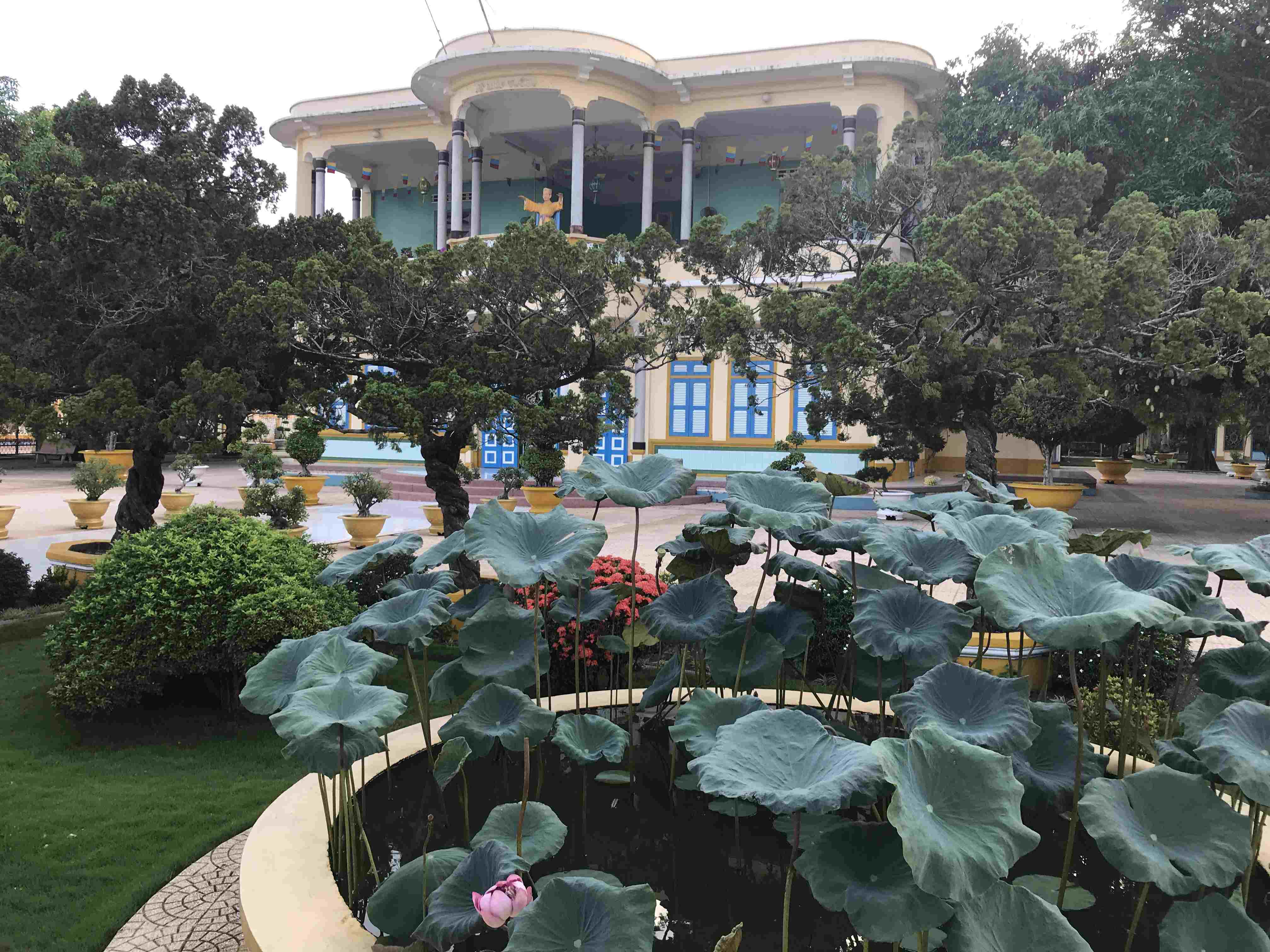
The house of the first Cao Dai pope is persevered as a sort of shrine. /CGTN Photo
The house of the first Cao Dai pope is persevered as a sort of shrine. /CGTN Photo
Tuan Em explained that all the people I saw working at the Holy See, including the top clerics, are volunteers and paid no salary. Everything they do is to further their religion.
It quickly became clear that in my few hours of stay there, I would struggle to comprehend any more than the basics of this faith, and the symbolism of their Great Temple.
Archbishop Ngoc Hong Thanh showed me around, starting with a mural at the entrance depicting the trio of Victor Hugo, Sun Yat Sen and renowned Vietnamese poet Nugyen Binh Khiem signing a covenant with God.
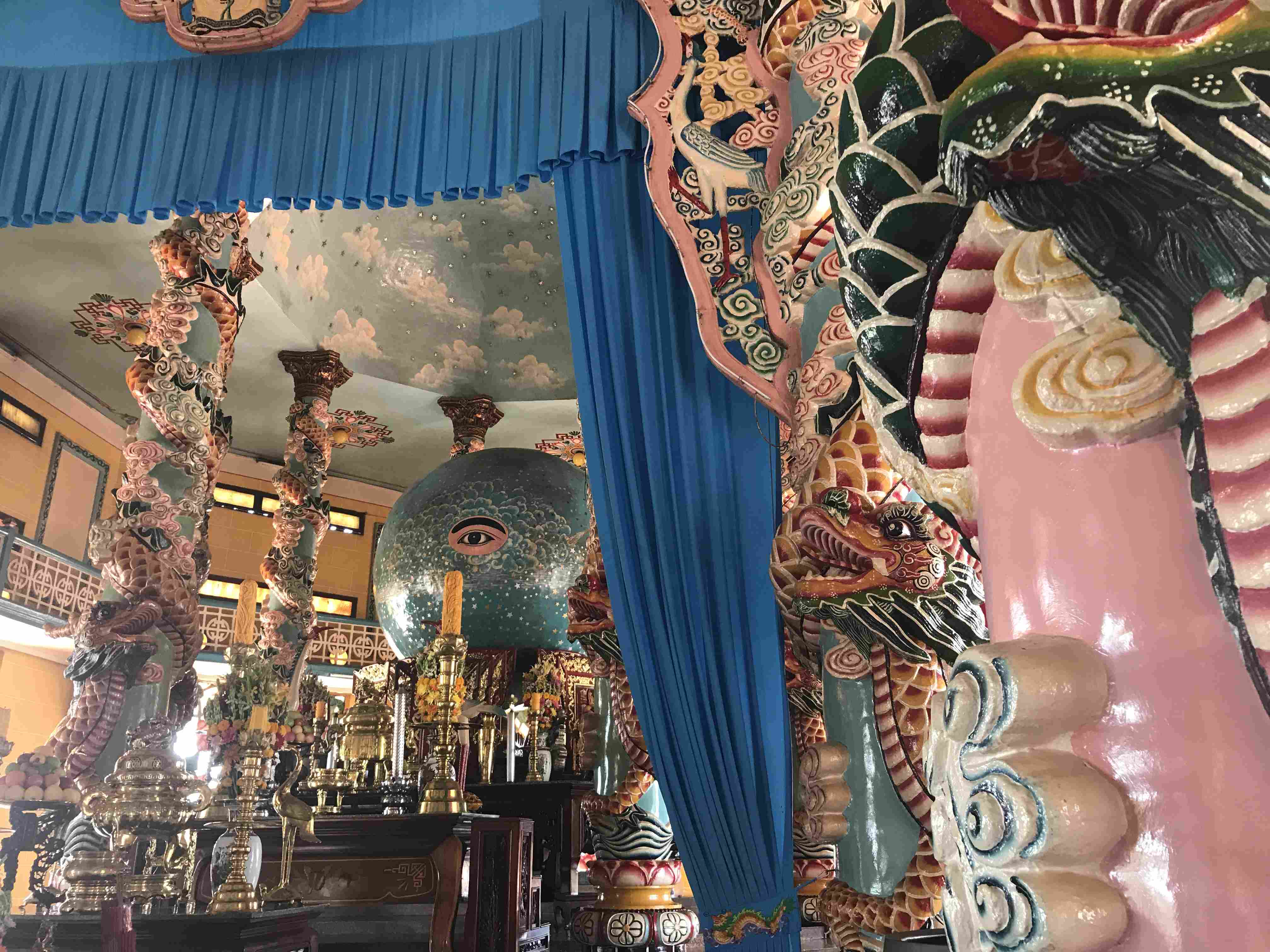
Dragons snake are engraved around the temple's pillars. /CGTN Photo
Dragons snake are engraved around the temple's pillars. /CGTN Photo
The main hall of the temple is lined with row upon row of pillars with dragons snaking around. The archbishop explained that they depicted dragons instead of the holy people of the religion so that no one figure would be seen as more important than another.
Paintings of clouds and stars covered the ceiling, which comprises a series of nine steps symbolizing the nine layers of heaven, I was told.
Toward the back of the temple the archbishop pointed to a group of statues above us.
“This is the most important and sacred place of Caodaism and also of the temple because this is the place where the spirit medium through séance received direct messages from God and other deities to instruct and manage the religion.”
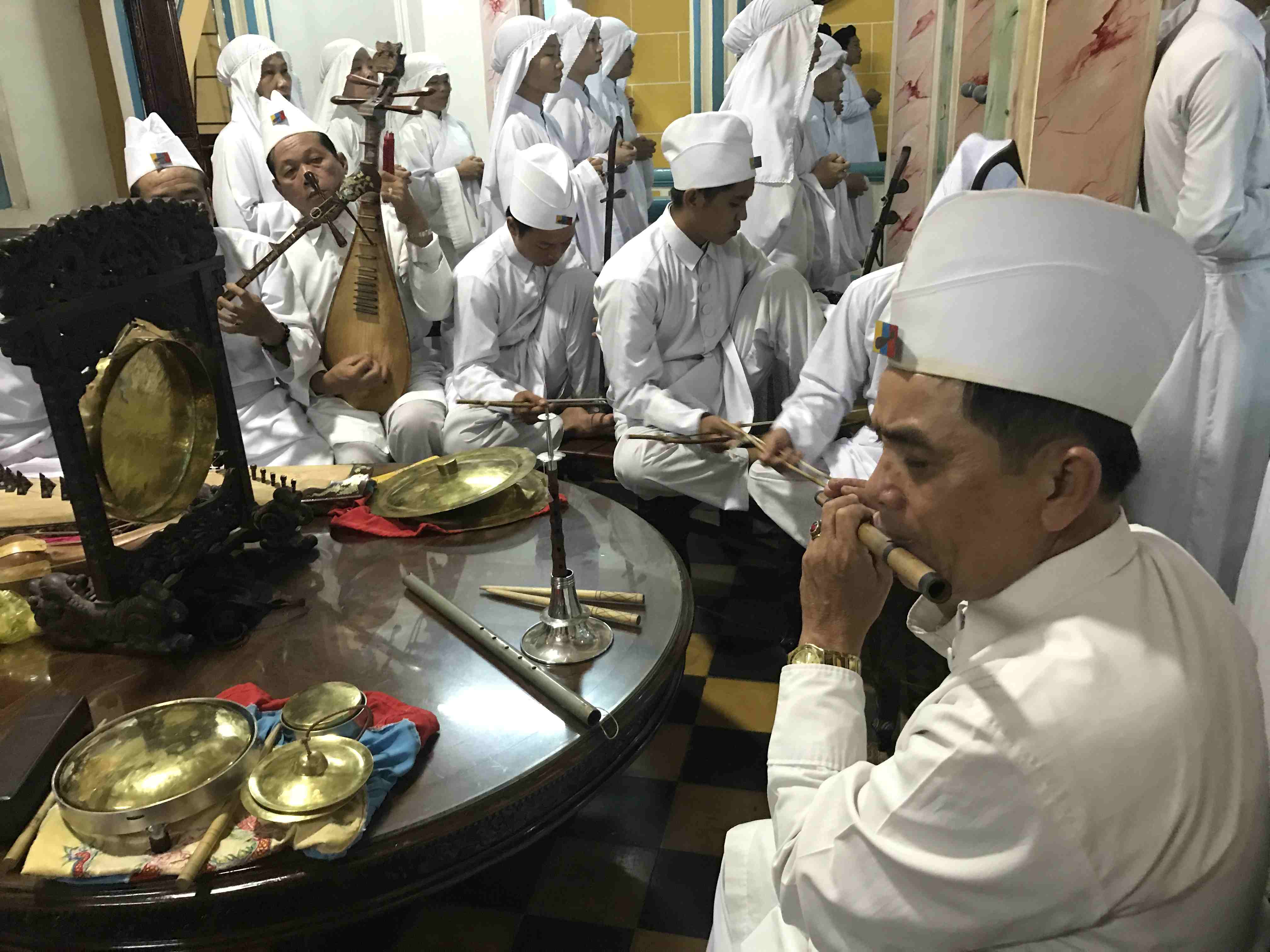
Musicians play during the midnight ceremony twice a month. /CGTN Photo
Musicians play during the midnight ceremony twice a month. /CGTN Photo
The statues included Buddha, Jesus, Confucius, Lao Tze, Guan Yin and spiritual head of Caodaism, Li Bai or Li Tai Pei, as he's known in Vietnam.
Further to the back, another sacred spot, this one containing a tablet dedicated to Victor Hugo.
“In the holy world he was a saint. He got a special sacred mission from God to come and help to develop Caodaism around the world” as a sort of guide for the religion's missionary work, the cardinal explained.
Services take place at the Great Temple and smaller local temples four times a day, but twice a month, on the first and 14th days of the lunar month, there are special midnight ceremonies. And I had timed my visit to coincide with the full moon.
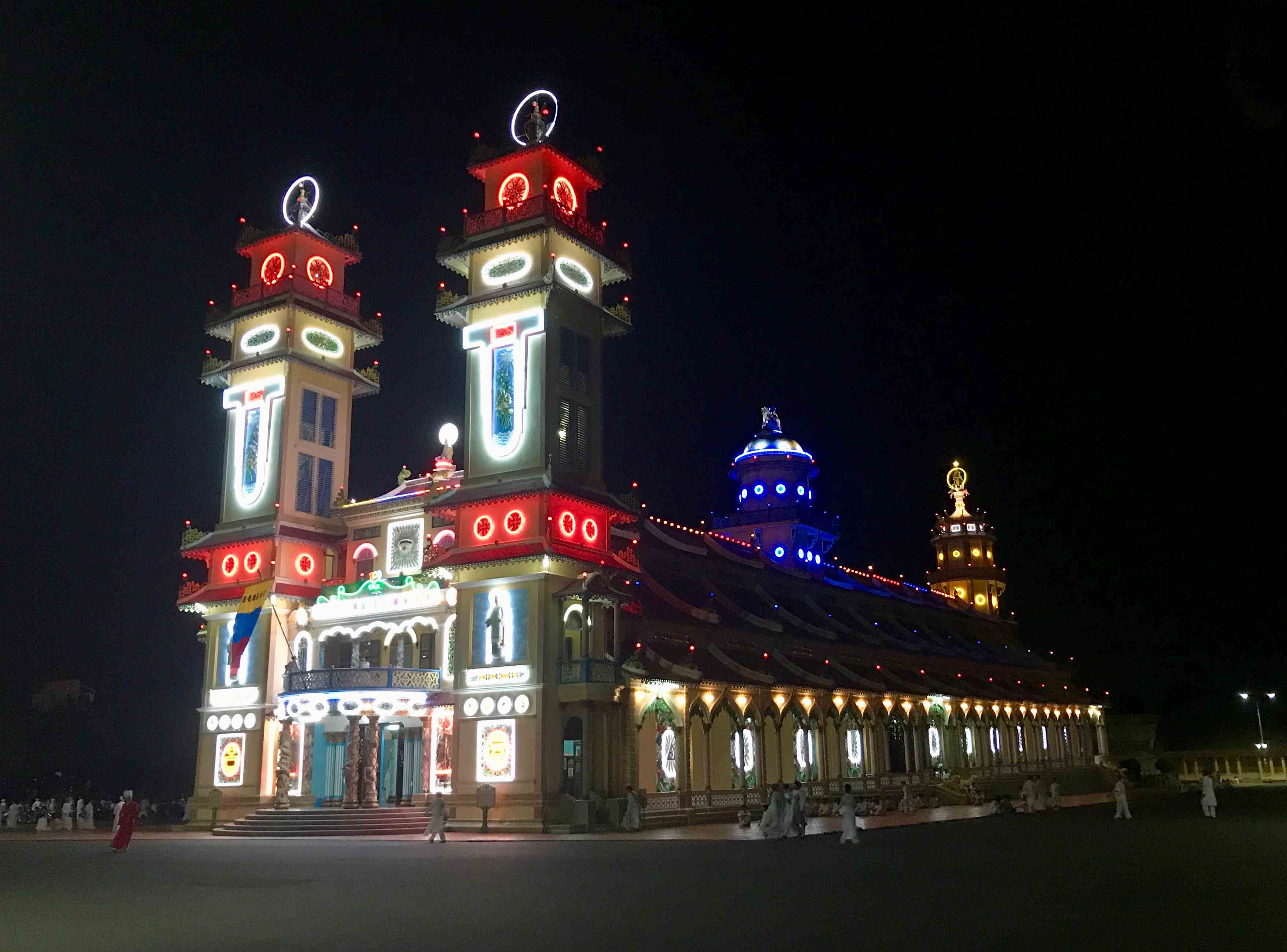
The Great Temple is ablaze with neon lights. /CGTN Photo
The Great Temple is ablaze with neon lights. /CGTN Photo
I arrived before midnight to find the temple illuminated in dazzling multi-colored neon, with the faithful lining up on either side of the building, and the clerics gathering across from them. The senior clerics were garbed in robes of yellow, red and blue, representing Buddhism, Confucianism and Taoism.
As midnight came, the banging of gong signaled the start of the ceremony was approaching. The multicolored procession of clergy filed in through the front door, while the rest of the adherents streamed in through the sides. A small orchestra played rousing music on traditional instruments as the ceremony got underway.
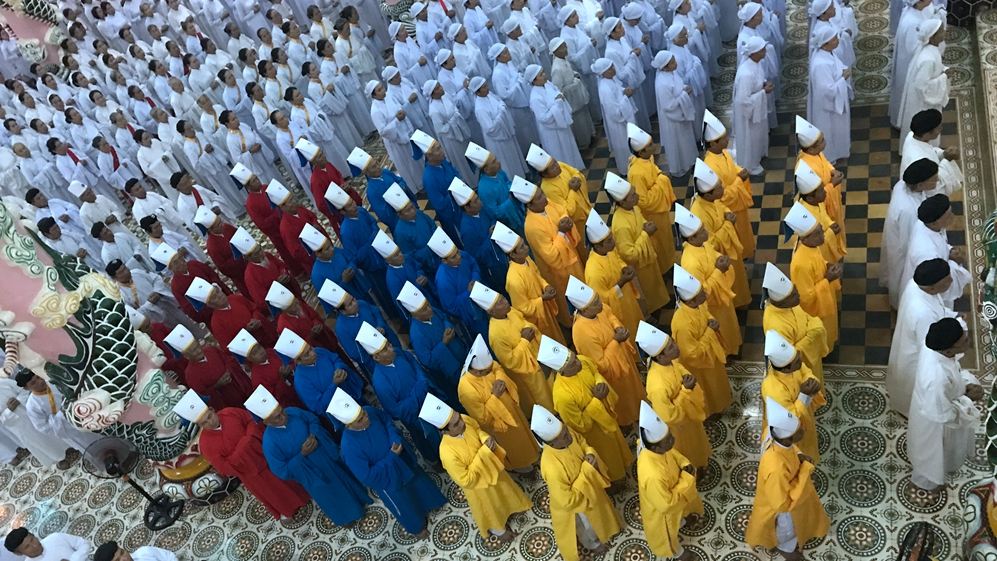
Different colors represent Taoism, Buddhism and Confucianism. /CGTN Photo
Different colors represent Taoism, Buddhism and Confucianism. /CGTN Photo
A day spent with the cardinal, archbishop and followers of the faith was clearly only enough to get a meager understanding of the intricacies of a faith. But it was enough for me to take away the central tenets of Caodaism, with its emphasis on compassion for all humans and other beings, on doing good deeds, bringing humanity together and striving for universal peace.
(Cover photo: Services take place four times a day at all Cao Dai temples. /CGTN Photo)

SITEMAP
Copyright © 2018 CGTN. Beijing ICP prepared NO.16065310-3
Copyright © 2018 CGTN. Beijing ICP prepared NO.16065310-3